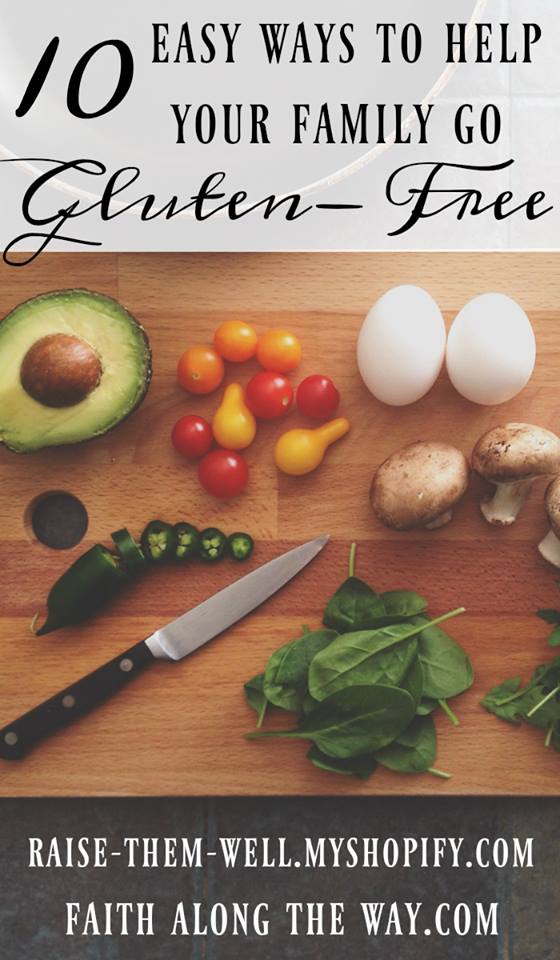
In 2013, the atmosphere of our family changed in the blink of an eye. Our daughter, Joy, was diagnosed with Autism at three years old and as a mom, I felt helpless.
Experiencing grief, shock and the weight of her future on my shoulders, I began searching for natural ways to help her manage her symptoms; including hand-flapping, hair pulling, tantrums and extreme aggression.
I quickly found the GFCF diet (Gluten-Free Casein-Free) diet as a source of hope for children on the spectrum. Scouring the Internet, I came across countless stories of families who adjusted the diet of their child to find it alleviated symptoms and decreased many of the challenging behaviors.
Immediately I was ready to plunge into the GFCF world.
As I navigated this new territory, I wish I had a mentor who could help me process and make sense of the new information. Wasn’t there someone who could help me piece all of this together and encourage my journey?
Since I didn’t have the luxury of a gluten-free BFF, consider me your cheerleader who’s here to encourage you and spur you on as you begin your own gluten-free journey. While the process may seem overwhelming, I promise that it IS doable and before too long, being gluten-free will be second nature.
1. Research, Research, Research
There are a lot of resources for eliminating gluten from your diet, and before making any changes, do your homework and learn how this process works.
The most comprehensive information can be found at TACA, Talk About Curing Autism, even if your child is not on the spectrum. There you will find a grocery store guide that I printed and took with me on my first shopping trips as well a variety of other resources to jumpstart your journey.
2. Learn the Language
I had no idea the hidden names of gluten until I started this journey, and it’s amazing just how sneaky food companies can be! Learn how to read labels and the hidden names of gluten so you can successfully plan meals your family can eat without exposure to gluten.
3. Take inventory of your pantry and check EVERY label.
Many of the common items you have around your home contain gluten without you even knowing it (including spices). Once you learn the hidden names of gluten, go through EVERY item in your pantry and see what needs to be replaced with a gluten-free substitute. You’ll be amazed at what you find that has hidden sources of gluten!
4. Find substitutes for favorite foods.
As a little foodie, I wanted my daughter to still love to eat and enjoy her favorite foods even though she was undergoing a huge lifestyle change. Although the gluten-free versions of her favorite foods were a little more expensive, I stocked up on the gluten-free version so she could still enjoy her favorite foods.
5. Don’t just buy gluten-free junk.
Even though there are gluten-free versions of just about any food, including cakes, cookies and breads, don’t settle for a diet of gluten-free junk. Use this as a chance to change your eating habits by eating more whole foods and not consuming processed gluten-free junk.
6. Make food ahead of time and freeze as you go.
Knowing that special occasions, such as birthdays and holidays, would pose a threat to cook gluten-free goodies for one, I found it easy to make a large batch and freeze as I go.
For example, I make ahead and freeze a large batch of gluten-free cupcakes for birthday parties, and then thaw and frost as needed. This makes life so much easier!
7. Be aware of cross contamination.
Chances are you will encounter a gathering or meal where there is food that’s not gluten-free present. As you handle both types of food, be careful not to cross contaminate. Use a separate serving spoon for each type of food, and wash your hands after touching an item that has gluten and then handling a gf product.
8. Educate your family.
It was important that all family members understood and were on board with the dietary changes that were happening in our family. It was helpful for all when I explained how to read food labels, the hidden names of gluten and what she could and could not eat. This way, everyone was on the same page and understood our expectations.
9. Journal progress and behaviors.
Keeping as food journal as this process begins is invaluable. It allows you to see the connection between behaviors and food eaten on that day and to make further dietary changes as needed.
10. Be patient.
This process of going gluten-free was not a quick one for us. We set a date to be mostly gluten-free (such as no bread, crackers and carb-type foods) and then a date to be 100% gluten-free (including those small pantry items such as spices).
Understanding and accepting that there will be setbacks and times where gluten is eaten by mistake (and sometimes by choice!) will minimize frustrations. The process may seem overwhelming at first, but the health benefits are completely worth it! You can do it!
About the Author
Sarah Ann is the author behind Faith Along the Way.com, where she shares her heart about faith-filled family, health and home. She’s passionate about spending time in God’s Word, encouraging women to seek God in the everyday and spending time with family. When she’s not corralling kids or folding the never-ending mountain of laundry, she enjoys reading, bargain hunting and writing about real-life experiences.

